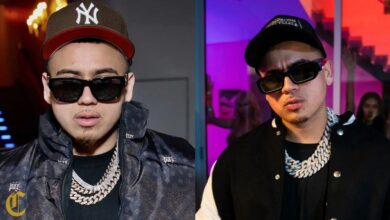Gotye Net Worth Breakdown: Income, Career & Wealth

Gotye — the name still echoes across music charts, playlists, and nostalgia playlists a decade after his breakout single “Somebody That I Used to Know.” But beyond that unforgettable tune, many fans wonder: what is Gotye’s net worth in 2025?
This detailed breakdown explores Gotye’s wealth, income streams, career milestones, and financial choices that make him one of the most intriguing and principled artists in modern music. Let’s dive into the numbers, facts, and unique approach that shape Gotye’s financial success.
Quick Bio Chart:
| Category | Information |
|---|---|
| Real Name | Wouter “Wally” De Backer |
| Stage Name | Gotye |
| Date of Birth | May 21, 1980 |
| Birthplace | Bruges, Belgium |
| Nationality | Belgian-Australian |
| Occupation | Singer, Songwriter, Producer, Multi-instrumentalist |
| Best Known For | “Somebody That I Used to Know” (featuring Kimbra) |
| Estimated Net Worth (2025) | US $12 – 15 million |
| Main Income Sources | Music royalties, streaming, touring, assets, collaborations |
| Active Years | 2001 – present |
Gotye’s Net Worth in 2025: A Realistic Estimate
As of 2025, Gotye’s estimated net worth stands between $12 million and $15 million, according to multiple financial and entertainment sources.
While this figure may seem modest compared to global pop stars with similar chart-topping success, it reflects Gotye’s deliberate artistic choices and his avoidance of excessive commercialisation.
- CelebrityNetWorth lists his fortune at around $10 million.
- WealthyOverview estimates a more recent range of $12–15 million.
- BioLabWiki and other entertainment data sources occasionally place him near $20 million, depending on asset calculations.
Gotye’s financial profile showcases steady, long-term sustainability rather than a flashy, short-term fortune.
Early Life & Career Beginnings
Wouter De Backer — later known as Gotye — was born in Belgium but moved to Melbourne, Australia, when he was just two years old. His fascination with music began early: he collected vinyl records, learned multiple instruments, and experimented with recording gear.
By the early 2000s, Gotye began self-producing experimental electronic tracks, merging analog and digital sounds. His debut album, Boardface (2003), and the follow-up Like Drawing Blood (2006) earned critical acclaim within the Australian indie scene.
Parallel to his solo career, he co-founded The Basics, an indie-pop trio celebrated for its raw performances and musical authenticity — a testament to Gotye’s dedication to artistry over fame.
Rise to Global Stardom
In 2011, Gotye released Making Mirrors, featuring the haunting and poetic hit “Somebody That I Used to Know” with New Zealand artist Kimbra. The song’s emotional storytelling and minimalist production struck a universal chord.
Achievements of “Somebody That I Used to Know”:
- #1 in 26 countries including the US, UK, and Australia
- Over 2 billion YouTube views
- 15+ million copies sold worldwide
- Three Grammy Awards (including Record of the Year)
- Named one of the Top 100 Songs of the Decade by Billboard
This single alone generated millions in revenue from sales, airplay, and global performance rights — but Gotye’s ethical stance shaped how much he actually earned.
Gotye’s Decision to Forgo YouTube Monetisation
Perhaps the most astonishing part of Gotye’s wealth story is his decision not to monetise the official YouTube video of his biggest hit.
In interviews, he explained that inserting ads before or during his art would “cheapen the creative experience.” This choice reportedly cost him several million dollars in potential ad revenue, but it earned him global respect for integrity.
As LADBible reported, he prioritised artistry over advertising — a rare stance in today’s music industry.
Gotye’s Major Income Sources
1. Music Royalties & Streaming
Gotye continues to earn steady royalties from:
- Global streaming platforms (Spotify, Apple Music, Deezer)
- Radio airplay and television use
- Digital sales and performance rights through APRA & AMCOS
“Somebody That I Used to Know” still garners millions of monthly streams, ensuring consistent income.
2. Album & Single Sales
Though Gotye has only released three solo studio albums, each remains profitable.
His discography includes:
- Boardface (2003)
- Like Drawing Blood (2006)
- Making Mirrors (2011)
Combined sales from these records continue to generate digital and physical royalties.
3. Live Performances & Touring
During his post-2011 world tours, Gotye performed across North America, Europe, and Australia, grossing several million dollars in ticket sales.
He has since scaled back major touring but occasionally performs select shows with The Basics or for artistic projects.
4. Collaborations & Producing
Gotye’s ability to compose, arrange, and produce for others adds additional revenue streams.
He has collaborated with various indie musicians, produced remixes, and engaged in multimedia projects that contribute to his diversified portfolio.
5. Licensing, Film & TV Use
While selective, Gotye does permit creative non-commercial licensing of his tracks for documentaries or educational content.
His decision to avoid brand endorsements limits some revenue but preserves his credibility and artistic image.
Wealth Composition Table
| Source | Estimated Contribution | Notes |
|---|---|---|
| Royalties & Streaming | $8 – 10 million | Driven by global digital plays |
| Touring & Live Shows | $2 – 3 million | Peak income during 2011-2014 tours |
| Assets & Investments | $1 – 2 million | Includes property & studio equipment |
| Collaborations & Licensing | $1 – 1.5 million | Side projects, film use |
| Total (Approx.) | $12 – 15 million | As of 2025 |
Artistic Integrity and Financial Trade-offs
Gotye’s financial story demonstrates that not all success is measured in millions.
By prioritising creative freedom over aggressive monetisation, he may have missed certain income opportunities, but gained:
- Full ownership of his music
- A loyal fanbase that values authenticity
- A sustainable reputation as an independent artist
This approach has made Gotye a symbol of ethical success in the music world.
Life After Fame
After 2014, Gotye largely stepped back from the global spotlight.
He dedicated time to his independent label, experimental sound archives, and projects like the Ondioline Orchestra, honouring vintage electronic music instruments.
He also continued performing and recording with The Basics while managing publishing rights and supporting Australian musicians.
Despite fewer public appearances, Gotye remains financially comfortable, living a quiet life while continuing to create innovative music.
How Gotye Compares to Other Artists
| Artist | Estimated Net Worth (2025) | Known For |
|---|---|---|
| Gotye | $12–15 million | “Somebody That I Used to Know” |
| Kimbra | $5–7 million | Featured artist on the same song |
| Lorde | $16 million | “Royals” |
| Sia | $35 million | “Chandelier” |
| Ed Sheeran | $200 million + | “Shape of You” |
Note: These values are approximations based on public reports and may fluctuate.
This comparison highlights how Gotye’s restrained commercial activity contrasts with peers who embraced mass marketing and frequent releases.
Future Outlook
Gotye’s financial trajectory remains promising. Even without new mainstream hits:
- His catalogue ensures long-term streaming royalties.
- A potential new album could easily generate fresh revenue.
- His continued involvement in sound archiving and composition may yield licensing income.
As streaming expands globally, even older hits like “Somebody That I Used to Know” continue to pay dividends year after year.
Lifestyle & Spending Habits
Gotye’s lifestyle reflects minimalism and creativity over luxury.
He’s not known for lavish mansions or expensive cars; instead, he invests in:
- Vintage music instruments
- Recording equipment
- Creative studios and sound projects
This balance of modest living and passionate artistry strengthens his long-term financial stability.
Fun Facts About Gotye
- He owns a vast collection of vintage synths and Ondioline instruments.
- He once considered releasing a “no-royalties” label to promote open music sharing.
- Despite limited new releases, his hit remains one of the most streamed Australian songs ever.
- He has Belgian roots but identifies strongly with the Australian music community.
Conclusion
Gotye’s story is a masterclass in balancing artistic integrity and financial success.
With an estimated net worth between $12 million – $15 million, the Belgian-Australian musician remains proof that sustainable wealth can coexist with genuine creativity.
He could have earned far more by monetising every aspect of his fame, but instead, he chose authenticity, independence, and respect for the art form.
In an era where viral hits often fade overnight, Gotye stands as an enduring example that true value lies not only in wealth but in legacy.
External References (Follow Links)
- Gotye Wikipedia Profile
- Celebrity Net Worth – Gotye
- Wealthy Overview: Gotye Net Worth
- TheThings: What Happened to Gotye After His Hit
(FAQs)
1. What is Gotye’s net worth in 2025?
Gotye’s estimated net worth in 2025 is between $12 million and $15 million, mainly from royalties, streaming, and past touring income.
2. How did Gotye make his money?
He earned most of his wealth from his hit “Somebody That I Used to Know,” album sales, live performances, and ongoing digital royalties.
3. Why did Gotye stop making new music?
Gotye didn’t quit music — he simply stepped away from commercial fame to focus on independent projects and sound preservation.
4. Did Gotye make money from YouTube?
No. Gotye chose not to monetise his YouTube videos to keep his art ad-free, a decision that cost him millions in potential earnings.
5. What is Gotye doing now?
He continues to make music privately, perform with The Basics, and curate the Ondioline Orchestra, focusing on creative and experimental sound projects.
For more celebrity updates, trending stories, and inspiring biographies, visit celebtoday.co.uk — your daily source for entertainment news and star insights!



